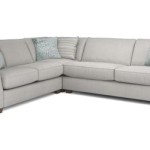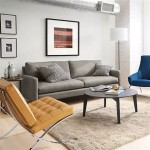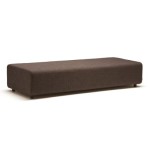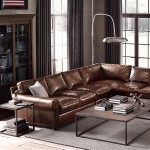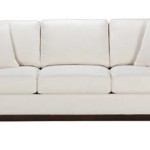Console Table Behind Sofa Decor: Enhancing Functionality and Aesthetics
The strategic placement of furniture is crucial in defining the character and utility of a living space. While sofas often serve as the focal point of a living room, the area directly behind the sofa is frequently overlooked. Integrating a console table behind the sofa presents a versatile opportunity to enhance both the functionality and aesthetic appeal of the room. This article explores the benefits of employing a console table in this manner, delving into key considerations for selection, styling, and overall integration into various interior design schemes.
A console table, typically characterized by its narrow depth and elongated form, is designed to sit flush against a wall. However, in the context of sofa placement, it can serve as a functional and decorative element bridging the gap between the sofa and the wall. This approach moves beyond simply filling an empty space; it allows for the creation of a more dynamic and purposeful environment.
Maximizing Functionality and Storage
One of the primary advantages of incorporating a console table behind a sofa is the added functionality it provides. It transforms an otherwise unused area into a valuable storage and display space. The surface of the console table can be used to hold lamps, books, decorative objects, and even beverages, making them readily accessible to those seated on the sofa. This eliminates the need for reaching across coffee tables or relying solely on side tables.
Furthermore, many console tables come equipped with drawers or shelves, providing enclosed storage options for items such as remote controls, magazines, blankets, or even smaller electronic devices. This feature is particularly useful in minimizing clutter and maintaining a tidy living space. The under-table space can also be utilized for storage baskets or decorative boxes, offering discreet storage solutions while enhancing the overall aesthetic.
Consider the layout of the room and the specific needs of the occupants when determining the optimal storage strategy. If the sofa is situated in a frequently used area, prioritizing accessible storage for everyday items will be more beneficial. Conversely, if the console table is intended primarily for decorative purposes, the storage function can take a secondary role.
The height of the console table should be carefully considered to ensure comfortable use. Ideally, the table should be slightly lower than or level with the back of the sofa. This allows for easy access to items placed on the table without obstructing the view of the sofa's back.
Enhancing Aesthetic Appeal and Visual Balance
Beyond its functional advantages, a console table behind a sofa can significantly enhance the aesthetic appeal of a living room. It can serve as a visual anchor, creating a sense of balance and harmony within the space. By strategically selecting and styling the console table, one can complement the existing décor and add depth and character to the room.
The choice of console table material and style should align with the overall design aesthetic of the living room. For a modern space, a sleek and minimalist console table made of metal or glass may be appropriate. In a more traditional setting, a wooden console table with ornate details could be a better fit. The console table's finish should also complement the colors and textures of the surrounding furniture and décor.
Styling the console table is an opportunity to create a visually appealing arrangement. Consider incorporating a mix of heights and textures to add interest. A tall lamp paired with shorter decorative objects, such as vases or sculptures, can create a dynamic composition. Adding a mirror or artwork above the console table can further enhance the visual impact and create a focal point. The size and placement of any artwork should be proportionate to the console table and the overall dimensions of the wall.
Pay attention to the color palette when styling the console table. Choose colors that complement the sofa and other elements in the room. A cohesive color scheme will create a sense of harmony and prevent the console table from looking out of place. Introduce pops of color through decorative accessories or artwork to add visual interest.
The placement of the console table itself can also impact the overall aesthetic. If the sofa is centered in the room, the console table should also be centered behind it. However, if the sofa is placed against a wall, the console table can be positioned off-center to create a more asymmetrical and dynamic look.
Addressing Practical Considerations and Space Constraints
Before integrating a console table behind a sofa, it is essential to consider practical factors and potential space constraints. The size of the room and the layout of the furniture will dictate the appropriate size and style of the console table. In smaller spaces, a slim console table with minimal depth will be more suitable to avoid overcrowding the room. In larger spaces, a more substantial console table can be used to create a bolder statement.
Consider the traffic flow in the room when determining the placement of the console table. Ensure that there is enough space to walk comfortably around the sofa and the console table. Avoid placing the console table in a location that obstructs doorways or pathways. It is also important to consider the placement of electrical outlets. Ensure that the console table is positioned close enough to an outlet to allow for the use of lamps and other electrical devices without the need for unsightly extension cords.
For sofas placed against a wall that features a baseboard, selecting a console table with a cutout or a slender leg design is important. This allows the table to sit flush against the wall without being obstructed by the baseboard. The table should be securely positioned to prevent it from tipping or sliding, particularly on hardwood or tile floors. Using furniture pads or securing the table to the wall can provide added stability.
The material of the console table should also be considered in relation to the wear and tear it will endure. If the console table is intended for frequent use, choose a durable material that is resistant to scratches and stains. For families with young children or pets, consider a console table made of a material that is easy to clean and maintain.
In conclusion, incorporating a console table behind a sofa presents a valuable opportunity to enhance both the functionality and aesthetic appeal of a living space. By carefully considering the size, style, and placement of the console table, one can create a more organized, visually appealing, and practical environment. The strategic integration of a console table in this manner elevates the overall design and utility of the room, transforming an often-overlooked space into a valuable asset.

How To Style A Console Table Behind Couch 4 Ways

How To Style A Console Table Behind Couch 4 Ways

30 Diy Sofa Console Table Tutorial Jenna Sue Design

The Perfect Foyer Table

3 Ways To Style A Sofa Table

How To Style A Console Table Behind Couch 4 Ways

Behind The Couch Table Ideas For Your Living Room Stefana Silber

Sofa Table Behind Couch Decor Ideas

Behind The Couch Table Ideas For Your Living Room Stefana Silber

How To Style A Console Table Behind Couch 4 Ways

